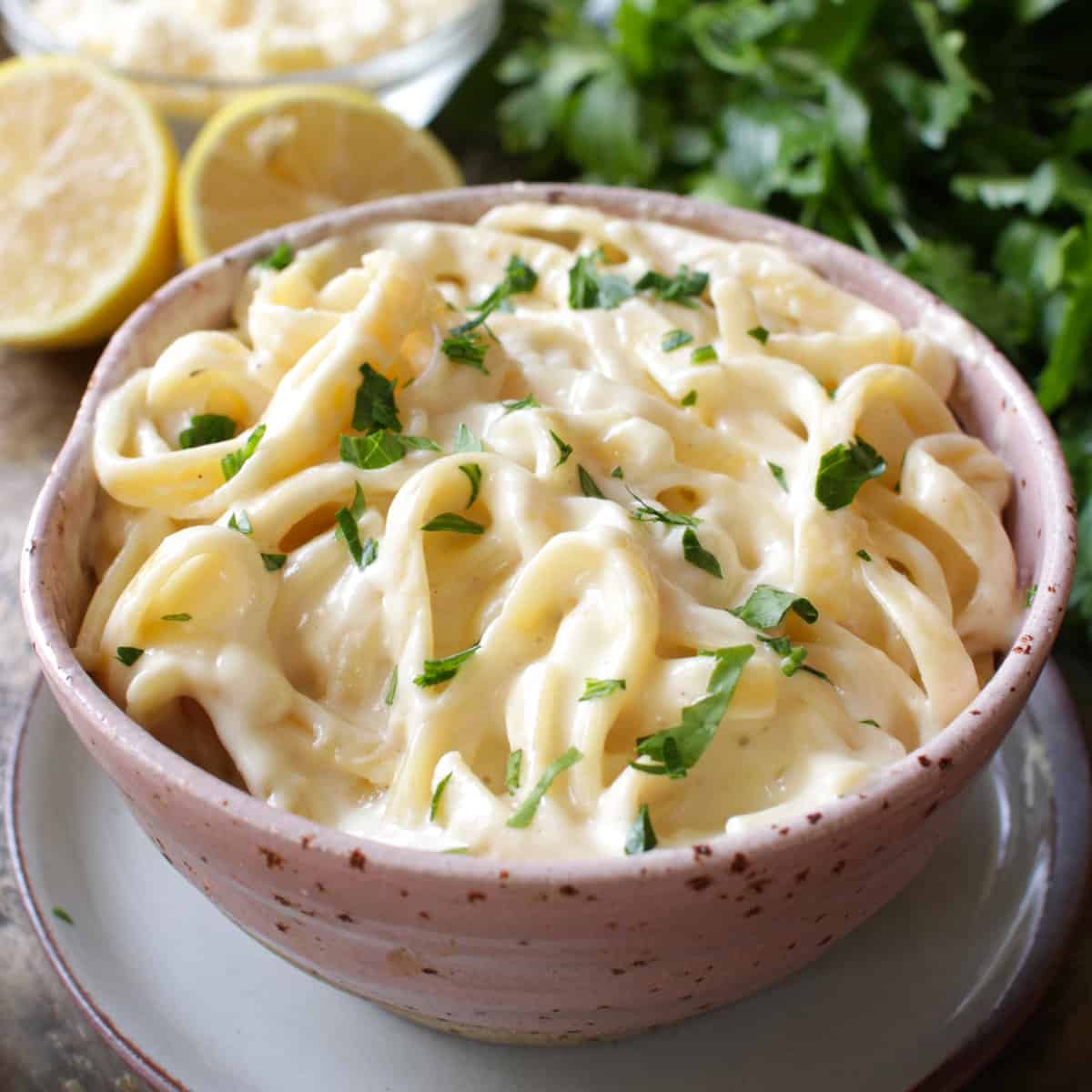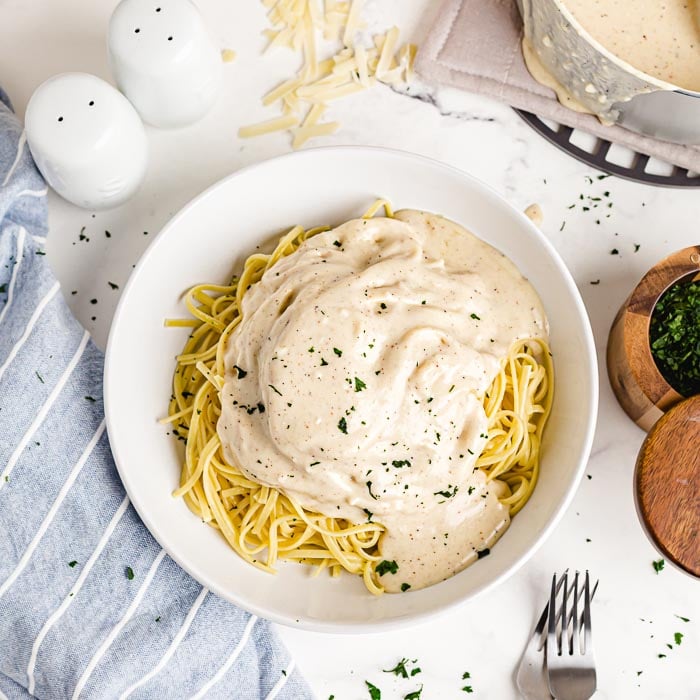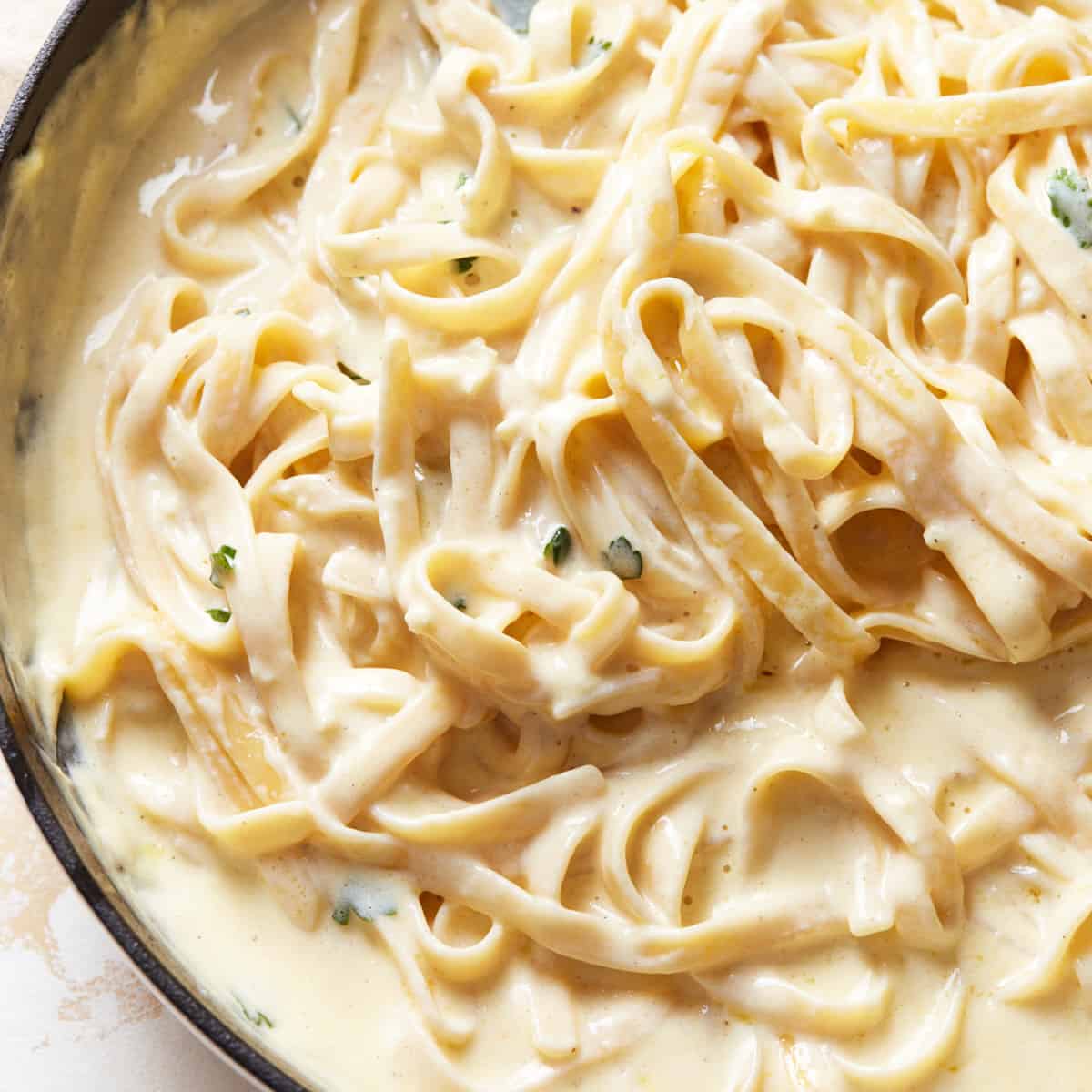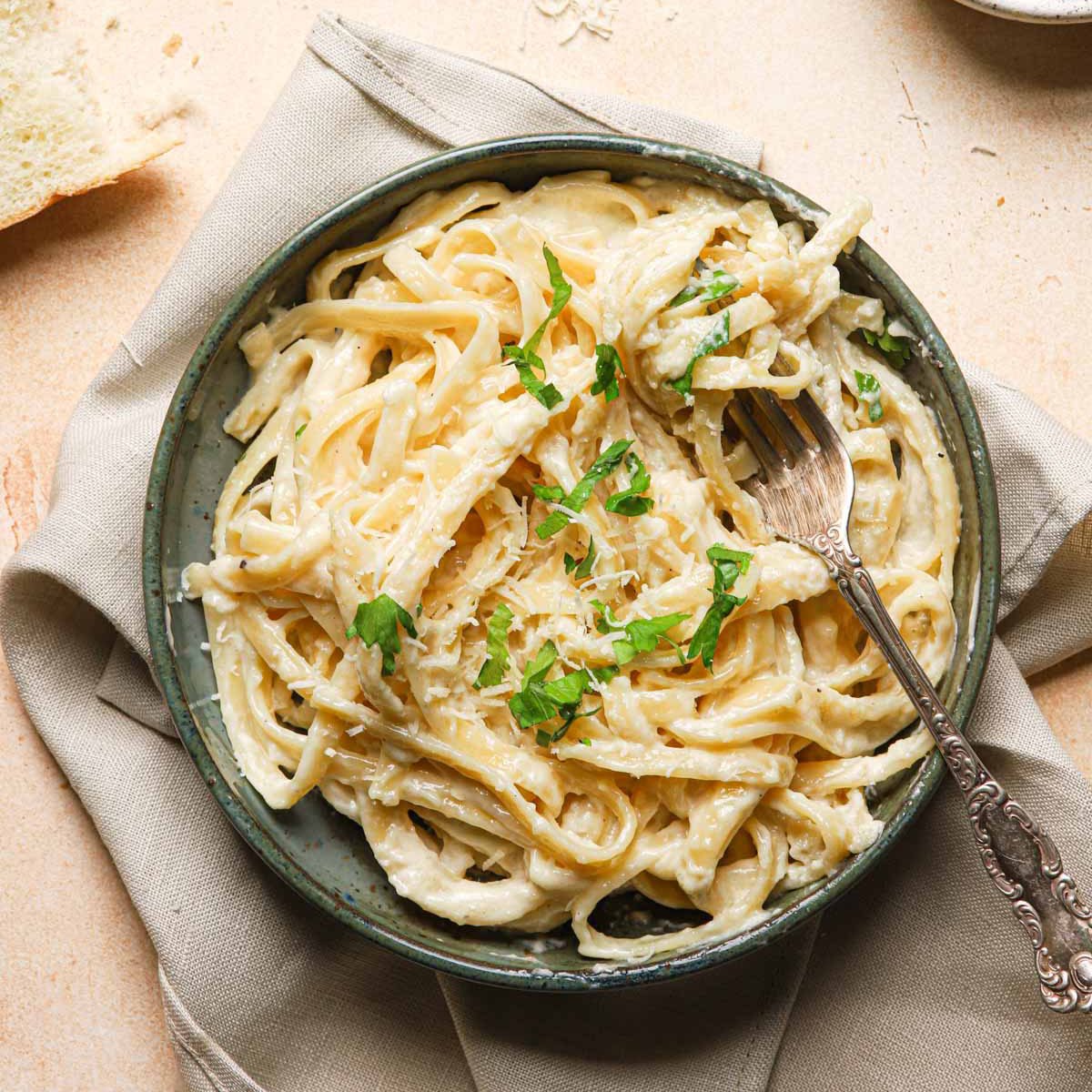Alfredo sauce recipe buttermilk – Embark on a culinary adventure with our tantalizing alfredo sauce recipe, infused with the tangy magic of buttermilk. Prepare to indulge in a rich and creamy sauce that will transform your pasta dishes into masterpieces.
Our step-by-step guide will empower you to craft this delectable sauce with ease. Discover the secrets to a velvety texture and explore variations that will ignite your taste buds.
Alfredo Sauce Recipe

Alfredo sauce is a classic Italian sauce made with butter, Parmesan cheese, and cream. It is a versatile sauce that can be used on pasta, vegetables, or meat.
To make a classic Alfredo sauce, you will need the following ingredients:
* 1 cup unsalted butter
* 1/2 cup all-purpose flour
* 3 cups milk
* 1 cup grated Parmesan cheese
* 1/4 teaspoon salt
* 1/4 teaspoon black pepper
Instructions:
1. Melt the butter in a large saucepan over medium heat.
2. Whisk in the flour and cook for 1 minute.
3. Gradually whisk in the milk until smooth.
4. Bring to a simmer and cook until thickened, about 5 minutes.
5. Remove from heat and stir in the Parmesan cheese, salt, and pepper.
Serve immediately over your favorite pasta.
Variations
There are many variations on the classic Alfredo sauce recipe. You can add herbs, spices, or different types of cheese to create a unique flavor.
Some popular variations include:
* Adding chopped parsley, basil, or oregano
* Adding a pinch of red pepper flakes
* Using a different type of cheese, such as Asiago or Gruyère
* Adding cooked chicken or shrimp
Experiment with different variations to find your favorite Alfredo sauce recipe.
Buttermilk in Alfredo Sauce
Buttermilk, a tangy and slightly acidic dairy product, plays a versatile role in an Alfredo sauce recipe, offering unique flavor and texture enhancements.
When incorporated into Alfredo sauce, buttermilk adds a subtle tanginess that complements the richness of the cream and cheese. It helps balance the flavors, preventing the sauce from becoming overly heavy or cloying.
Types of Buttermilk
Various types of buttermilk can be used in Alfredo sauce, each imparting its own distinct characteristics:
- Traditional Buttermilk: Made from the liquid that separates from cultured milk, traditional buttermilk adds a pronounced tang and a slightly grainy texture to the sauce.
- Cultured Buttermilk: Similar to traditional buttermilk, cultured buttermilk is created by adding lactic acid bacteria to milk. It has a milder tang and a smoother texture.
- Non-Dairy Buttermilk: For those with dairy allergies or preferences, non-dairy buttermilk made from plant-based milks (such as almond or soy) can be substituted. It provides a similar tanginess without the dairy component.
The type of buttermilk used will influence the overall flavor and texture of the Alfredo sauce, allowing for customization based on personal preferences.
Comparisons to Other Sauces

Alfredo sauce is a classic cream-based sauce that is often compared to other popular sauces such as béchamel or hollandaise. While all three sauces are made with cream, there are some key differences in their ingredients, preparation methods, and flavor profiles.
Béchamel sauce is made with a roux, which is a mixture of equal parts butter and flour. The roux is cooked until it is smooth and bubbly, and then milk is gradually added while whisking constantly. Béchamel sauce is typically seasoned with salt, pepper, and nutmeg. It is a versatile sauce that can be used in a variety of dishes, such as lasagna, macaroni and cheese, and creamed soups.
Hollandaise sauce is made with egg yolks, butter, lemon juice, and salt. The egg yolks and lemon juice are whisked together until they are thick and pale yellow. The melted butter is then gradually added while whisking constantly. Hollandaise sauce is a rich and flavorful sauce that is often served with eggs Benedict, asparagus, or fish.
Key Differences
- Ingredients: Alfredo sauce is made with cream, butter, Parmesan cheese, and nutmeg. Béchamel sauce is made with a roux (butter and flour), milk, and seasonings. Hollandaise sauce is made with egg yolks, butter, lemon juice, and salt.
- Preparation method: Alfredo sauce is made by melting butter in a saucepan and then whisking in the cream. The Parmesan cheese and nutmeg are then added and the sauce is cooked until it is thickened. Béchamel sauce is made by cooking a roux until it is smooth and bubbly, and then gradually adding milk while whisking constantly. Hollandaise sauce is made by whisking together egg yolks and lemon juice until they are thick and pale yellow, and then gradually adding melted butter while whisking constantly.
- Flavor profile: Alfredo sauce is a rich and creamy sauce with a nutty flavor from the Parmesan cheese. Béchamel sauce is a smooth and creamy sauce with a mild flavor. Hollandaise sauce is a rich and flavorful sauce with a lemony tang.
Applications and Pairings

Alfredo sauce is a versatile sauce that can be used in a variety of dishes. It is most commonly paired with pasta, but it can also be used on vegetables, meats, and even as a base for other recipes.
Some popular pasta dishes that pair well with Alfredo sauce include fettuccine Alfredo, penne Alfredo, and spaghetti Alfredo. Alfredo sauce can also be used to make lasagna, macaroni and cheese, and other pasta casseroles.
In addition to pasta, Alfredo sauce can also be used on vegetables. Some popular vegetables that pair well with Alfredo sauce include broccoli, cauliflower, and zucchini. Alfredo sauce can also be used to make vegetable gratins and other vegetable side dishes.
Alfredo sauce can also be used on meats. Some popular meats that pair well with Alfredo sauce include chicken, beef, and pork. Alfredo sauce can be used to make chicken Alfredo, beef Alfredo, and pork Alfredo. Alfredo sauce can also be used to make meat casseroles and other meat side dishes.
Alfredo sauce is a versatile sauce that can be used in a variety of dishes. It is a creamy, cheesy sauce that is sure to please everyone at the table.
Incorporating Alfredo Sauce into Different Cuisines
Alfredo sauce can be incorporated into a variety of cuisines, including Italian, American, and Asian. In Italian cuisine, Alfredo sauce is typically used on pasta dishes. In American cuisine, Alfredo sauce is often used on chicken and beef dishes. In Asian cuisine, Alfredo sauce can be used to make fusion dishes, such as Alfredo stir-fry and Alfredo sushi.
Alfredo sauce made with buttermilk is a delicious and creamy sauce that can be used on pasta, chicken, or vegetables. If you’re looking for a spicy kick, try the cholula wing sauce recipe . This sauce is made with cholula hot sauce, butter, and garlic, and it’s perfect for adding a little heat to your favorite dishes.
After trying the cholula wing sauce recipe, come back to the alfredo sauce recipe buttermilk for a delightful meal.
Versatility of Alfredo Sauce
Alfredo sauce is a versatile sauce that can be used as a base for other recipes. Some popular recipes that use Alfredo sauce as a base include Alfredo soup, Alfredo dip, and Alfredo pizza. Alfredo sauce can also be used to make breadsticks, garlic knots, and other bread-based dishes.
Troubleshooting Common Issues: Alfredo Sauce Recipe Buttermilk

Alfredo sauce is a delicate sauce that can be prone to a few common problems. Here are some tips on how to prevent and resolve these issues:
Curdling
Curdling occurs when the milk solids in the sauce separate from the fat. This can happen if the sauce is heated too quickly or if too much acid is added. To prevent curdling, heat the sauce gradually over low heat and whisk constantly. If the sauce does start to curdle, remove it from the heat and whisk in a little bit of cold milk or cream.
Breaking
Breaking occurs when the fat and water in the sauce separate. This can happen if the sauce is overheated or if too much liquid is added. To prevent breaking, heat the sauce gently over low heat and add the liquid gradually. If the sauce does break, remove it from the heat and whisk in a little bit of cold butter or cream.
Using High-Quality Ingredients
Using high-quality ingredients is essential for making a delicious Alfredo sauce. The butter should be unsalted and the Parmesan cheese should be freshly grated. Avoid using pre-shredded cheese, as it contains additives that can prevent the sauce from emulsifying properly.
Following the Recipe Carefully
It is important to follow the recipe carefully when making Alfredo sauce. Do not skip any steps or substitute ingredients, as this can affect the final outcome. If you are unsure about any of the steps, consult a reputable online resource or cookbook.
Culinary History and Cultural Significance

Alfredo sauce, a rich and creamy staple in Italian cuisine, boasts a history steeped in culinary traditions and cultural significance.
Origins and Association with Italian Cuisine
The exact origins of Alfredo sauce remain a subject of debate, with various theories suggesting its inception in Rome or Naples. One popular legend attributes its creation to Alfredo di Lelio, a Roman restaurateur, who supposedly whipped up a simple sauce of butter, Parmesan cheese, and pasta for his pregnant wife in 1914. Regardless of its precise origin, Alfredo sauce quickly gained popularity in Italy, becoming a beloved dish both at home and in restaurants.
Cultural Significance and Role in Food Traditions
Alfredo sauce has played a pivotal role in Italian food culture, symbolizing indulgence, comfort, and celebration. It is often served as a main course, typically paired with fettuccine or other long pasta shapes, and is a staple in many traditional Italian family gatherings. The sauce’s rich flavor and versatility have also made it a popular choice for pizzas, dips, and even as a base for other sauces.
Anecdotes and Stories, Alfredo sauce recipe buttermilk
Over the years, Alfredo sauce has inspired numerous anecdotes and stories that further underscore its cultural significance. One such tale involves the late American actor Douglas Fairbanks Sr., who was so enamored with the sauce during a visit to Rome that he arranged for a large shipment to be sent to his Hollywood home.
Last Point

Alfredo sauce, with its buttermilk twist, stands as a testament to the boundless possibilities of culinary innovation. Embrace this versatile sauce and let it inspire your culinary creations. Whether you’re a seasoned chef or a home cook looking to impress, this recipe will guide you towards culinary triumph.
Q&A
What makes buttermilk an ideal ingredient for alfredo sauce?
Buttermilk’s acidity balances the richness of the cream, creating a smooth and velvety texture.
Can I substitute regular milk for buttermilk?
Yes, but adding a squeeze of lemon juice or white vinegar to regular milk can mimic buttermilk’s tanginess.
How can I prevent my alfredo sauce from curdling?
Gradually whisk in the grated cheese over low heat and avoid boiling the sauce.


